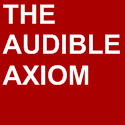
In the late sixties and early seventies, a young Martin Scorsese began using pop singles to score his films. It seems odd to even mention this today as a revolutionary idea, because the technique is now so common in mainstream American blockbusters. And yet, that idea can be seen as the threshold that truly brought Hollywood into the era of the modern film.
During the 1910s and ‘20s, a orchestral score was the only real choice. Some theaters would hire a lone pianist to provide music during a film, others a full band. When sound was introduced, scores still took their cues from the Birth of a Nations (Births of a Nation?) and the Metropolises: Big films with big budgets and big music. There were deviations, of course. Fritz Lang's M features little music, other than the whistling of "In the Hall of the Mountain King", perhaps film's first leitmotif.
Even when taking movies like M into consideration, that rule held true for quite some time. The big budget, blockbuster score, as we think of it today, however, only really found its place in the '50s, '60s and '70s. There are two major schools for such scores: First, the Max Steiner/John Williams score. I combine the names not because the music is similar, but because of the common intent. Simply put (and this is an over-generalization, but bear with me) the music reprents the crucial moments of the film. Steiner, in Gone With the Wind and Casablanca (nobody mention "As Time Goes By") used music to convey the emotion of the characters and the audience. Williams used the same idea in films like Star Wars and Raiders of the Lost Ark, more obviously and more iconically. In fact, in Raiders of the Lost Ark, the same triumph motif repeats at virtually every moment of Indy's success.
The second school, the Bernard Herrmann/Ennio Morricone score, is more abstract. The sludgy jazz of Taxi Driver seems to reflect Travis Bickle's growing discontent, and bubbling anger. The unyielding spiraling nature of Vertigo's score ties back to obsession. These scores can be just as iconic as the previous school's (try The Good, the Bad and the Ugly) but they're both more interesting and more important. Instead of reflecting isolated moments, they reflect the film as a whole.
Between the '70s and the 21st century, Steiner/Williams scores went out of fashion. I don't mean to suggest that music of that sort is gone today; I just mean that it more often serves as incidental music than anything else. There are exceptions, like the enormously mainstream Harry Potter series, but those scores are largely gone from Hollywood. Herrmann/Morricone scores are more present today, especially in artier big budget releases. Even this may be beginning to change, though; 2007's No Country for Old Men was widely praised for its very limited use of music.
But of course, there's still the pop song. "The Eye of the Tiger" in Rocky III springs immediately to mind. Anything by Quentin Tarantino is loaded with examples. To circle back to my first paragraph, the transition from Steiner/Williams scores to pop music is a fairly sharp representation of the change between the '60s and the modern age. Pop music is both more immediately relateable, and more ironic than bloated scores. Consider the fight scene set to "Please Mr. Postman" in Mean Streets, and A Clockwork Orange's scene of rape and attack with Alex singing "Singing in the Rain". Both are intensely (and immediately) striking, because of the sharp contrast between the audio and the visual. Both of those films are somewhat iconic of the '70s. Perhaps that's because both would be so out-of-place in the '60s or before. Of course, scenes like those are risky. When done without style, such scenes comes off as lazy and derivative.
So, whether done with or without any sort of ironic detachment or camp value, pop music in film is intrinsically modern. And it's a tool that modern filmmakers would be wise not to abuse.














0 comments:
Post a Comment